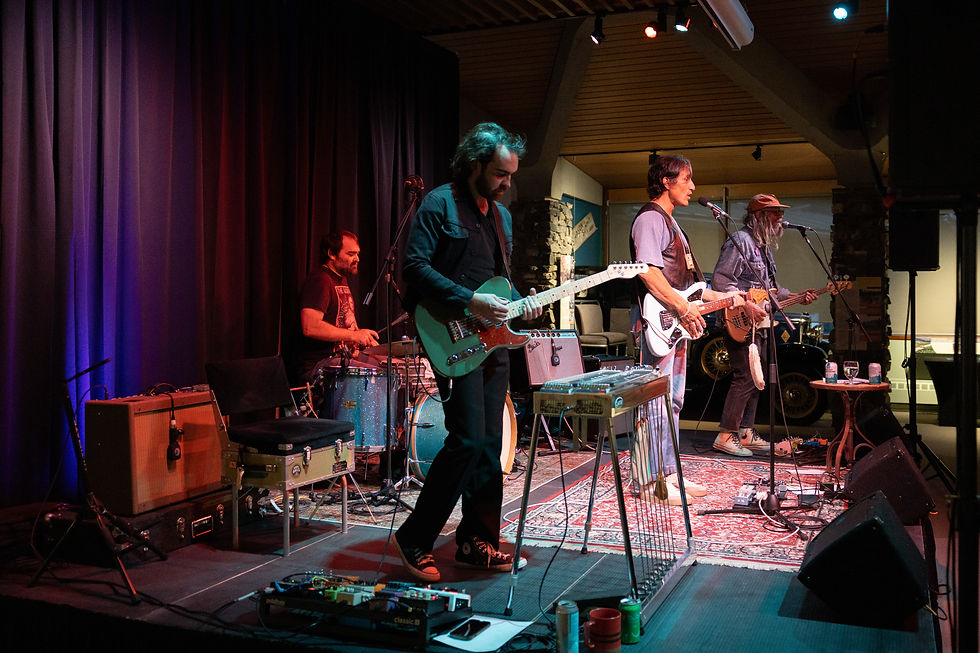Bringing Back the Buffalo
- Oct 10, 2018
- 3 min read
Updated: Oct 19, 2018
Written by Amie Lalonde
In February 2017, a project to reintroduce wild bison to Banff National Park began with the introduction of a small herd to a paddock in the remote Panther Valley. This summer, thirty-one bison were released from the paddock and are now free-roaming in the Park for the first time in over 100 years. The roots of this story stretch deep into the past and have connections with one of Banff’s more colourful characters and a bison roundup in Montana that began in 1907.
With support from the Eleanor Luxton Historical Foundation and a plan left behind by former Whyte Museum Head Archivist, Jennifer Rutkair, I was able to delve into the materials in the Luxton fonds to create the digital exhibition Bringing Back the Buffalo that showcases a classic wild-west bison roundup that was responsible for reinvigorating Canada’s bison population.

Michel Pablo and his cowboys, Luxton Foundation fonds, LUX/I/D2/4/12
The story begins as this: by the late 1880s the wild bison population in Canada and the United States had been decimated by overhunting. On the Flathead reservation in Montana two ranchers – Charles Allard and Michel Pablo – bought ten bison from a man named Walking Coyote in the mid-1880s. In 1896 Allard died and his half of the herd was sold and dispersed. Meanwhile Pablo’s herd continued to grow and eventually began to range wild along the Flathead River. This herd of bison was bought by the Canadian Government in 1907, rounded up, and shipped by train to Alberta.

Bison being rounded up, Luxton Foundation fonds, LUX/I/D2/4/49, Whyte Museum of the Canadian Rockies
Banff’s Norman Luxton was part of the group that travelled to Montana to oversee the roundup and in photographs, letters to his wife Georgina, and a narrative document he recorded the difficult task of corralling and loading the bison that roamed wild on the Flathead Reservation. In a letter to Georgina, written from Ravalli on September 19, 1907, Luxton writes about the difficulties in rounding up Pablo's herd.
"We have had very poor luck with the buffalo, so far only 80 have been corralled, they are just too wild for any thing charging right through a line of horsemen to get back on their range. They are going to give them one more trial, and then commence to load what they have got which means a week or 10 days more."
In his written narratives he tells of the ways in which the bison attempted to break away from the cowboys. One of my favourite stories involves a group of corralled bison scaling a vertical cliff to escape in the dead of night. Another describes how Luxton, lying in wait by the Pend D’Oreille to take pictures of bison swimming in the river, got trapped in a tree for over an hour when a large bull stationed itself near the base of the tree he had been sitting in.

"Buffalo at rest early in the morning in the corrals at Ravalli," Luxton Foundation fonds, LUX/I/D2/4/15, Whyte Museum of the Canadian Rockies
The roundup of the Pablo-Allard herd took three years to complete. In the end, 709 buffalo were shipped from Montana to Alberta. The original plan was to ship the buffalo to the newly formed Buffalo National Park at Wainwright, Alberta, but the fences and outbuildings were not yet ready in 1907. The first loads of Pablo’s buffalo were instead shipped to Elk Island National Park, via the railway station at Lamont, Alberta. The buffalo became an enormously popular attraction at Elk Island and, when the buffalo were set to be moved to Wainwright in 1909, Frank Oliver ordered 30 to 50 buffalo left behind at Elk Island. This small herd left at Elk Island flourished and buffalo from it have since helped support conservation projects in Canada and the United States. It is this herd at Elk Island that the new Banff herd is descended from.
Click here to visit the digital exhibition Bringing Back the Buffalo.



Comments